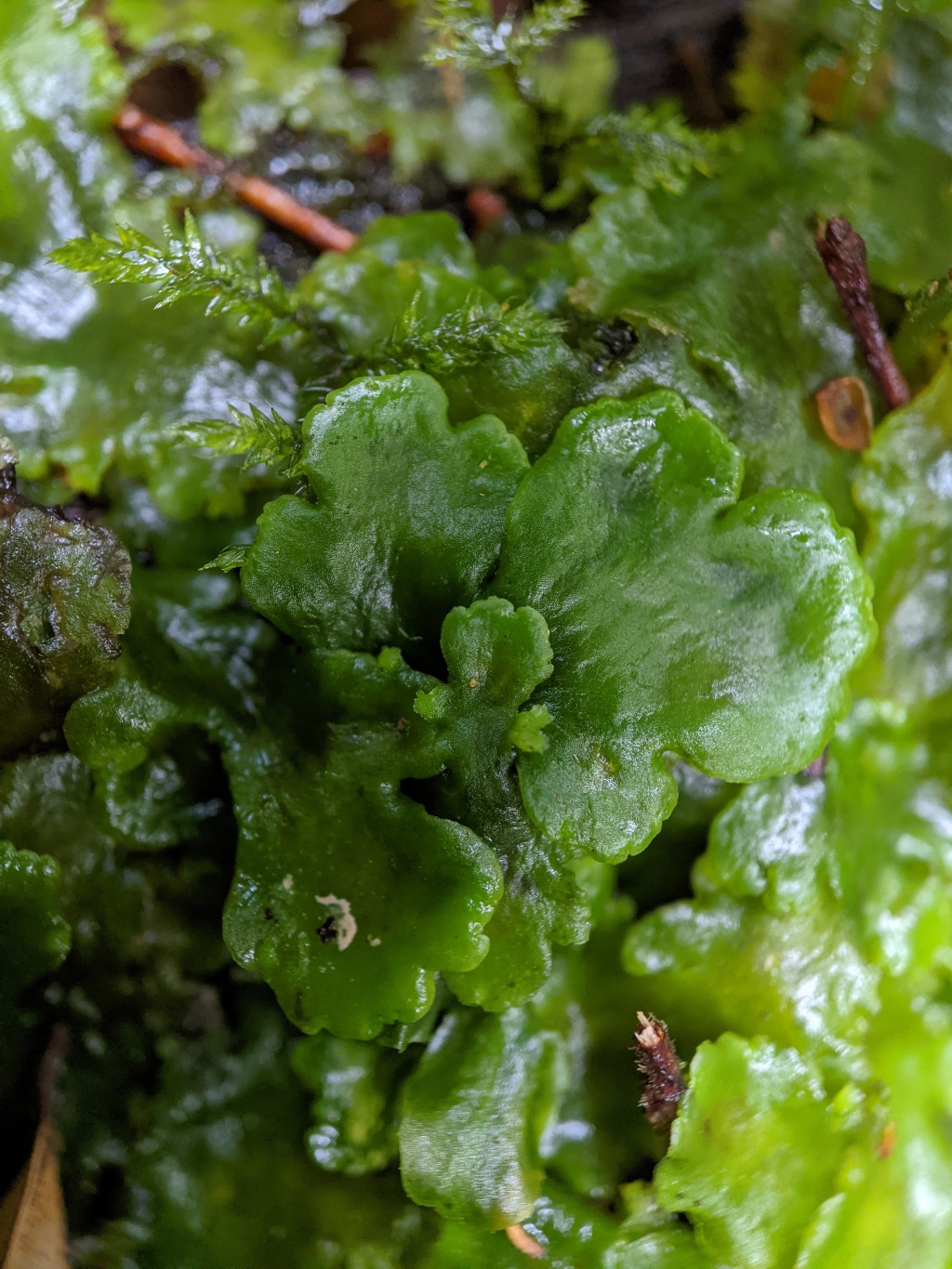Lobatiriccardia
Terrestrial, lithophytic, or on logs, dioicous with female and male plants of similar size. Specialised asexual propagules absent. Thallus prostrate, simple or irregularly pinnate to bipinnate, adaxially flat and convex abaxially or slightly concave adaxially, bluish green to deep green, smooth, glabrous; lobes to 12 mm wide; margin acute; cells with up to 12 large oil bodies; oil bodies spherical, ovoid or elliptic, granular-botryoidal, grey or brown. Antheridia sunken in chambers on short lateral branches or rarely on the main thallus (not in Victoria) in two regular rows or 2–3 irregular rows. Sporophytes on poorly-developed lateral branches, marginally between lobes or rarely on adaxial surface (not in Victoria); calyptra clavate, hairy or glabrous, smooth or tuberculate. Capsule ellipsoid. Spores papillose, shed singly; elaters unispiral.
Eight species shared between Ecuador, Japan, China, Malesia, New Caledonia, New Zealand and Australia (Preußing et al. 2010); one species, L. alterniloba (Hook.f. & Taylor) Furuki, in Victoria.
Victorian L. alterniloba was previously placed in Australian treatments in Aneura (e.g. Scott 1985). However, phylogenies based on chloroplast DNA sequences place this species within a lineage formed entirely of Lobatiriccardia species (Preußing et al. 2010). These species share several morphological features that differ from Aneura warranting their recognition as distinct from Aneura including the position of the sporophyte being marginal between lobes rather than being slightly abaxial to the margin, fewer and larger oil bodies, and broader paraphyses (Preußing et al. 2010).
Preußing, M., Olsson, S., Schäfer-Verwimp, A., Wickett, N.J., Wicke, S., Quandt, D. & Nebel, M. (2010). New insights in the evolution of the liverwort family Aneuraceae (Metzgeriales, Marchantiophyta), with emphasis on the genus Lobatiriccardia. Taxon 59: 1424–1440.
Scott, G.A.M. (1985). Southern Australian Liverworts. Australian Government Publishing Service: Canberra.
 Spinning
Spinning